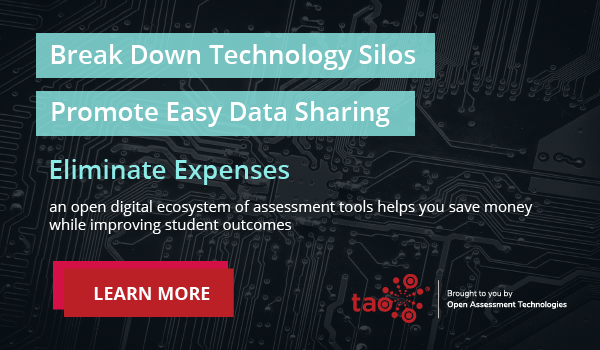It’s clear that the integration of technology into assessment processes has become inevitable in today’s rapidly evolving education landscape. Educational institutions and organizations are increasingly adopting assessment technology to streamline evaluations, enhance learning outcomes, and gain insights into student performance. However, while the benefits are substantial, there are significant challenges to navigate when implementing assessment tech. In this post, we’ll explore some of these pitfalls and how to avoid them to ensure a successful integration.
1. Insufficient Planning and Strategy
“Don’t try to revamp your systems overnight or without a well thought out strategy – it can cost you more than just the price of the tech,” advises Andre Nunes, Head of Product at OAT. An effective assessment technology implementation always requires careful research and planning to ensure the solutions you’re considering meet your organization’s requirements for integration, security, accessibility and more.
Rushed decisions can lead to mismatched solutions, inadequate support, a lack of alignment with educational goals, and loss of institutional buy-in. In the end, an institution may be left with technology they don’t use, and dollars wasted on time, effort and resources. Before diving in headfirst, it’s critical to start by defining clear goals and objectives for your assessment technology implementation, involving key stakeholders, and developing a comprehensive implementation strategy.
Looking for a template to help you begin the process? Our eBook, The Decision Maker’s Checklist for Rolling Out Assessment Technology serves as a guide that you can use to get started drafting a rollout plan for your organization.
2. Neglecting Training & Support
Implementing assessment tech often involves a learning curve for educators, administrators, and students. Even the most user-friendly platform is wasted if educators are not adequately prepared to use it. This is where the buy-in from educators becomes a linchpin of success. Training programs should focus on technical guidance for using the assessment tools as well as best practices for digital assessment design.
At the same time, training alone isn’t enough to drive the successful adoption and use of newly integrated assessment tech. Regular updates and ongoing support from your software provider are essential to address user questions and any technical challenges that may arise. This, combined with robust training and a commitment to staying current help lay the foundation for a successful implementation & user adoption process.
3. Forgetting Accessibility Requirements & User-Experience
Addressing accessibility concerns is a pivotal aspect of integrating assessment technology. Neglecting to ensure that assessments are accessible to every student, including those with disabilities, not only diminishes the principles of inclusivity but also opens the door to potential legal repercussions. To foster a truly inclusive educational environment, it is imperative to verify that your assessment technology aligns with established accessibility standards, such as the Web Content Accessibility Guidelines (WCAG) and Section 508 guidelines. Additionally, the tools you choose should consider the diverse needs of your students by offering alternative formats and accommodations for those who may require them. For example, keyboard controls, screen readers, screen color contrast, etc. Prioritizing accessibility isn’t just a legal requirement; it’s a commitment to equitable education for all.
User experience (UX) plays a crucial role in the adoption of assessment tech. A clunky or confusing interface can discourage users and hinder the technology’s effectiveness. Prioritize UX design and usability testing to ensure that the technology is user-friendly and intuitive.
4. Lack of Scale & Flexibility
It’s inevitable that an organization’s technology needs will change over time, and assessment tech should be scalable and flexible to accommodate future growth and evolving requirements. The key is to implement solutions that can adapt to changing assessment methods, curricular updates, and the expanding needs of your institution.
It’s common for proprietary vendors to provide solutions that lock up their customers’ assets, effectively handcuffing them to a solution and making it exceedingly challenging to retain the value of their work should the need to transition to alternative systems arise. You can avoid this vendor lock-in by choosing solutions that support open standards and interoperability. By doing so, you retain the autonomy to make technology choices that best serve your institution’s needs without being tethered to a single provider’s proprietary constraints.
5. Don’t Overlook Data Security and Privacy
As the role of assessment technology expands to encompass the collection and storage of sensitive student data, the paramount importance of safeguarding data security and privacy cannot be overstated. Neglecting data security measures when considering your exam technology implementation can have serious legal and ethical ramifications, and even damage your brand integrity. To proactively mitigate these risks, it is imperative to opt for tools that employ state-of-the-art data encryption protocols, strictly adhere to stringent data protection regulations, and institute transparent policies governing data usage and access. By prioritizing these measures, you not only protect your institution but also uphold the trust and confidence of your stakeholders.
–
While integrating technology into assessment processes offers numerous benefits, it’s essential to navigate these potential pitfalls carefully. By avoiding these major challenges and adopting a strategic, user-centered approach to implementation, educational institutions and organizations can harness the full potential of assessment tech to improve learning outcomes and gain valuable insights into student performance.
Interested in seeing how TAO helps organizations find an effective transition to online testing technology? Click here to learn more!


